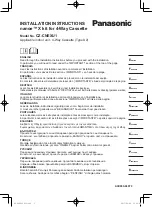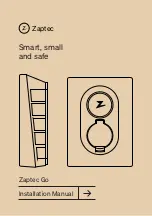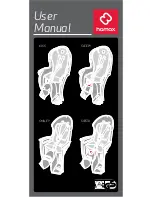
5
Select the suspension that is appropriate for your riding style by
referring to the table «intended use chart» (Table 1, page 2). Please
see your Marzocchi retailer, or contact Marzocchi directly, if you
require assistance in selecting the correct suspension.
II.II Identifying your intended use
CROSS COUNTRY:
Riding along hilly trails where some bumps
and smaller obstacles, such as rocks, roots, or depressions, may
be encountered. CROSS COUNTRY riding does not include jumps
or “drops” (riding off rocks, fallen trees or ledges) from any height.
These forks must be used with tires speci
fi
cally designed for CROSS
COUNTRY riding, and disk, rim or linear pull brakes. You should only
attach generators and racks, if any, to the designated mounting points
provided on the forks.
TRAIL:
This riding style is for skilled Cross Country riders, and
involves moderately steep slopes and medium sized obstacles.
TRAIL forks should be used only with rim or linear pull brakes or
with disk brakes, and those frames, wheels and other components
speci
fi
cally designed for this riding style. The brakes must be
attached to the designated mounting points provided on the fork.
Never make any modi
fi
cation to your fork when attaching any
equipment.
4X:
This riding style is similar to “BMX RACE,” and is for skilled
riders only. To be performed on dedicated courses made of dirt,
rocks and wooden features. Such courses are composed of jumps
shaped for smooth landing and banked corners that help the rider
maintain speed and avoid excessive impact. This riding style does
not include riding on, around, or over urban obstacles, or extreme
dirt jumps.These forks should only be used with disk brakes, and
those frames, wheels and other components speci
fi
cally designed
for this riding style. The disk brakes must be attached to the
designated mounting points provided on the fork. Never make any
modi
fi
cation to your fork when attaching any equipment.
ENDURO:
This riding style is for skilled riders, and involves steep,
aggressive slopes, large obstacles, and moderate jumps. ENDURO
forks should be used only with disk brakes, and those frames, wheels
and other components speci
fi
cally designed for this riding style. The
disk brakes must be attached to the designated mounting points
provided on the fork. Never make any modi
fi
cation to your fork when
attaching any equipment.
DIRT JUMPING:
This “BMX” or “motocross” style of riding is only for
the most skilled riders, and involves jumping from one mound of dirt
to another. It also includes riding over and around ”urban obstacles”
such as man-made, or other concrete, structures, or racing on a
track consisting of jumps made from mounds of dirt which the rider
must negotiate by jumping or turning at speed. These forks should
only be used with disk brakes, and those frames, wheels and
other components speci
fi
cally designed for this riding style. The
disk brakes must be attached to the designated mounting points
provided on the fork. Never make any modi
fi
cation to your fork when
attaching any equipment.
FREERIDE/DOWNHILL:
This discipline is only for professional or
highly skilled riders. It includes relatively high jumps or “drops’ and
negotiating larger obstacles such as boulders, fallen trees, or holes.
These forks should be used only with disk brakes, and those frames,
wheels and other components speci
fi
cally designed for this riding
style. The disk brakes must be attached to the designated mounting
points provided on the fork. Never make any modi
fi
cation to your fork
when attaching other equipment.
W
ARNING
!
Failure to properly overcome obstacles on the trail, or failure to
properly land after a jump or drop, could cause your suspensions
to fail, resulting in a loss of bicycle control, serious injury, or
death to the rider.
Learn how to properly
fl
ow around obstacles on the trail. Hitting obstacles
such as rocks, trees or holes straight-on puts forces on your suspension it
was not designed to absorb. Landing improperly after a jump or drop also
puts forces on your suspension it was not designed to absorb.
You should only perform jumps or drops when a transition, or down
ramp, is available to help your bicycle absorb the impact forces
generated during the landing by having both wheels smoothly make
contact with the transition, or down ramp, at the same time. Any
other type of landing is dangerous, as it could result in accidents or
damages to the components.
Ensure that the steepness and length of the transition, or
down ramp, are suitable for the height from which you jump
or drop and that you are skilled enough to perform them.
1. INTRODUCTION
1.1 Conventions
1.1.1 Orientation of the fork
RIGHT
LEFT
TO
P
BOTT
OM
FRONT
BACK
2
1
3
4
7
8
6
1
3
4
7
8
6
5
Picture 1 -
Conventional orientation of the fork
1.1.2 Main parts of the fork
1. Steer tube, 2. Upper crown, 3. Lower crown, 4. Stanchion tube, 5.
Brake boss, 6. Monolite, 7. Dropout, 8. Disc brake mount.
2. TECHNICAL INFORMATION
2.1 Spring system
Inside MARZOCCHI forks you will
fi
nd coil springs, or air, used as
suspension mechanism.
2.2 Damping system
The damping load that is generated during compression and
rebound of the fork legs can be adjusted by hydraulic valve pumping
rods, or by special cartridges.
W
ARNING
!
NEVER use the compression lock position while riding
downhill as the fork will not react properly when hitting
obstacles, and can result in a loss of control of the bicycle, an
accident, personal injury, or death.
Summary of Contents for 320 LCR CARBON
Page 1: ......
Page 79: ...11 2014 Ed 00 00 ...
















































